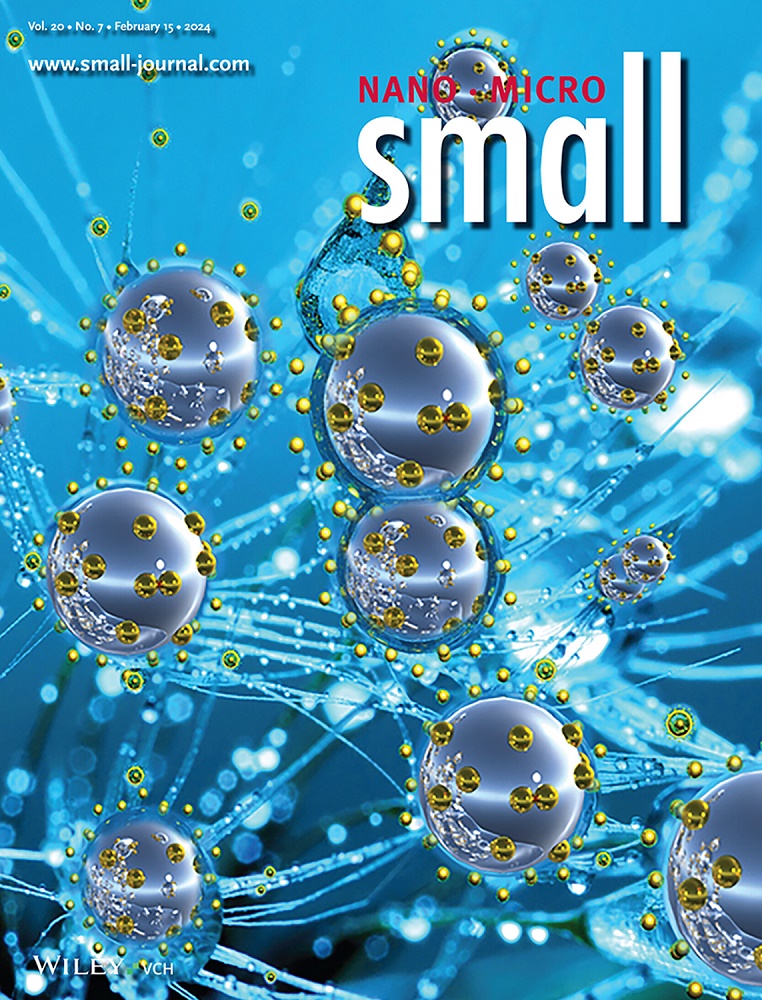Ultra-Tough Anisotropic Bionic-Metafabric with Core-Shell Architecture for Sustainable Radiative Cooling.
IF 12.1
2区 材料科学
Q1 CHEMISTRY, MULTIDISCIPLINARY
引用次数: 0
Abstract
The development of scalable high-quality radiative cooling materials can effectively address overheating issues without energy consumption. While some progress has been made, significant challenges remain in a narrow application range, low cooling power, and poor mechanical properties, which fail to meet requirements for sustainable use. Here, inspired by the special structure of white moth wings and spider silk, a flexible, strong, and tough high-efficiency radiation cooling metafabric (STRCM) is demonstrated with a unique fiber microstructure (including anisotropy and core-shell structure). The metafabric exhibits remarkable mechanical characteristics, boasting an effective tensile strength of 2.55 MPa, and exceptional toughness with an elongation at break of 726.94% and an impact energy absorption of 31 MJ m-3. More importantly, the metafabric demonstrates excellent radiative cooling with a temperature drop of ≈6.7 °C and an average cooling power of 79.0 W m-2 under a peak solar intensity of ≈978 W m-2 (tested in Beijing, China). During a long-term intermittent testing period, the cooling effect of the material shows no noticeable decline. The multi-level structural design of this work provides an unprecedented strategy for simultaneously enhancing mechanical properties and radiative cooling for long-term applications.用于可持续辐射冷却的核壳结构超韧各向异性仿生超织物。
开发可扩展的高质量辐射冷却材料可以在不消耗能源的情况下有效地解决过热问题。虽然取得了一些进展,但仍然存在应用范围窄、冷却功率低、机械性能差等重大挑战,无法满足可持续使用的要求。本文以白蛾翅膀和蜘蛛丝的特殊结构为灵感,展示了一种具有独特纤维微观结构(包括各向异性和核壳结构)的柔性、强韧、高效辐射冷却超织物(STRCM)。该织物具有优异的力学性能,有效抗拉强度为2.55 MPa,断裂伸长率为726.94%,冲击吸能为31 MJ m-3。更重要的是,在峰值太阳强度≈978 W m-2(中国北京测试)下,该超织物表现出优异的辐射冷却性能,温度下降约6.7℃,平均冷却功率为79.0 W m-2。在长期的间歇试验期间,材料的冷却效果没有明显下降。这项工作的多层次结构设计为同时提高长期应用的机械性能和辐射冷却提供了前所未有的策略。
本文章由计算机程序翻译,如有差异,请以英文原文为准。
求助全文
约1分钟内获得全文
求助全文
来源期刊

Small
工程技术-材料科学:综合
CiteScore
17.70
自引率
3.80%
发文量
1830
审稿时长
2.1 months
期刊介绍:
Small serves as an exceptional platform for both experimental and theoretical studies in fundamental and applied interdisciplinary research at the nano- and microscale. The journal offers a compelling mix of peer-reviewed Research Articles, Reviews, Perspectives, and Comments.
With a remarkable 2022 Journal Impact Factor of 13.3 (Journal Citation Reports from Clarivate Analytics, 2023), Small remains among the top multidisciplinary journals, covering a wide range of topics at the interface of materials science, chemistry, physics, engineering, medicine, and biology.
Small's readership includes biochemists, biologists, biomedical scientists, chemists, engineers, information technologists, materials scientists, physicists, and theoreticians alike.
 求助内容:
求助内容: 应助结果提醒方式:
应助结果提醒方式:


